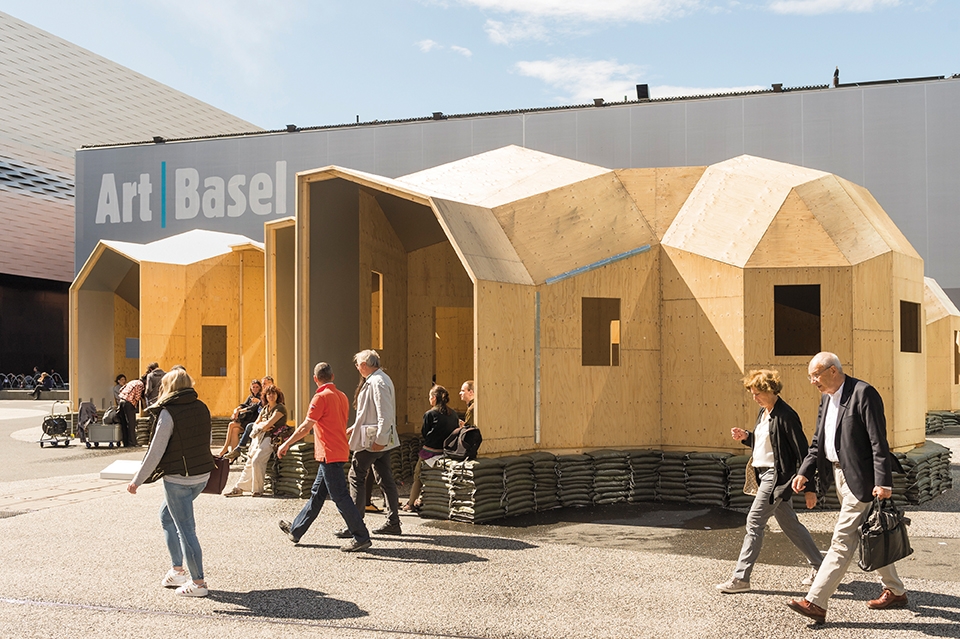Schools and libraries go hand-in-hand, both containing and spreading knowledge far and wide. Whether it’s a university or an elementary school, the library is the well of information students can dip into at any time. The same goes for Oscar Tuazon’s Water School, coming to Michigan State University’s Broad Art Museum.
“Oscar was very clear that in the school, the first thing you do is build a library,” said Steven Bridges, associate curator at the Broad Art Museum.
The library is one of Water School’s key features, full of books from Michigan State University’s library and others that guests can read and mark up as they see fit. More rare books are in the exhibition’s archival section, but none of them are available to leave the museum. However, Bridges said the school plans to put a full bibliography online.
Topics in the library run a wide gamut, covering everything from engineering, sustainability and dome building to Michigan and the Great Lakes. Two of the larger focuses are on climate change and the architecture the “school” is based on.
Inspired by southwest inventor and engineer Steve Baer’s Zome House, guests will see three large architectural pieces Tuazon built. The structures — made of plywood and aluminum — are one-to-one models of Baer’s house in Albuquerque,
N. M., easily large enough to walk around in.
“Basically, it’s a third of Baer’s home,” Bridges said. “It’s really like the size of a small house.”
While inspired by Baer, Tuazon’s work is giving it an update, including this exhibition’s pièce de résistance, a new “water window” prototype.
In Baer’s home, he created a system for storing the sun’s energy in water drums installed in the home’s large window bays. Over the course of the day, the water would heat up from sun exposure. Then, at night, the water would release heat into the house, thereby heating up the whole house. Bridges said he thinks Tuazon envisions this prototype eventually working like a plumbing system.
“Oscar has been very interested in this idea, while also acknowledging new technologies and new ideas which have been developed since then,” Bridges said. “This system could be updated while simultaneously also recovering the nature of what a window is.”
In Baer’s design, the windows are basically obstructed by the water drums, but in Tuazon’s version, the window itself would be filled with water and fit in one of the bays of the architecture. No water drum, no obstruction.
Bridges said the collaboration for the window prototype was developed by a large group, including Guardian Glass LLC, the Lansing Glass Company, engineers from MSU, and architect Jerry Garcia. Bridges said they likely wouldn’t fill the prototype with water at the exhibit for a few different reasons, including logistical challenges, but they would use it to model what this type of system could do in the future.
Bridges is the first to admit the show may sound a little abstract, a little hard to picture, but that’s part of what makes this exhibition so interesting.
“It really is kind of experimental and prototypical in its nature, but I think that’s also what’s really exciting about it. How we want to be working at the museum is through exploration,” he said.
Once the exhibition ends, the prototype will make its way back to Tuazon’s art studio in Los Angeles, where one of his other water schools is located. Bridges said this water school is part of a much larger project, one of three schools around the country, including the up-and-running California exhibit, and another being built in Minnesota.
At each water school, Tuazon focuses on that location’s local context with water, such as Michigan’s various water crises, including Flint. The schools are connected to their location, including through some of the sculptures included at the Broad. As a whole, the schools also address larger issues, such as climate change.
As one might guess, Water School isn’t going to be a static exhibit. Bridges said they want people to think of the water school as a space for themselves and to host their own exhibits, to be mixed in with the museum’s programming schedule of activities.
Like the library and Tuazon himself, they hope to encourage discussion.
“The opportunity for the exhibit to act like some sort of platform or catalyst for awareness and further dialogue … all those kinds of things really excite me and make for a very meaningful process in the end,” he said.
Oscar Tuazon: Water School
Broad Art Museum
547 E. Circle Dr.,
East Lansing
Jan. 26-Aug. 25
broadmuseum.msu.edu





